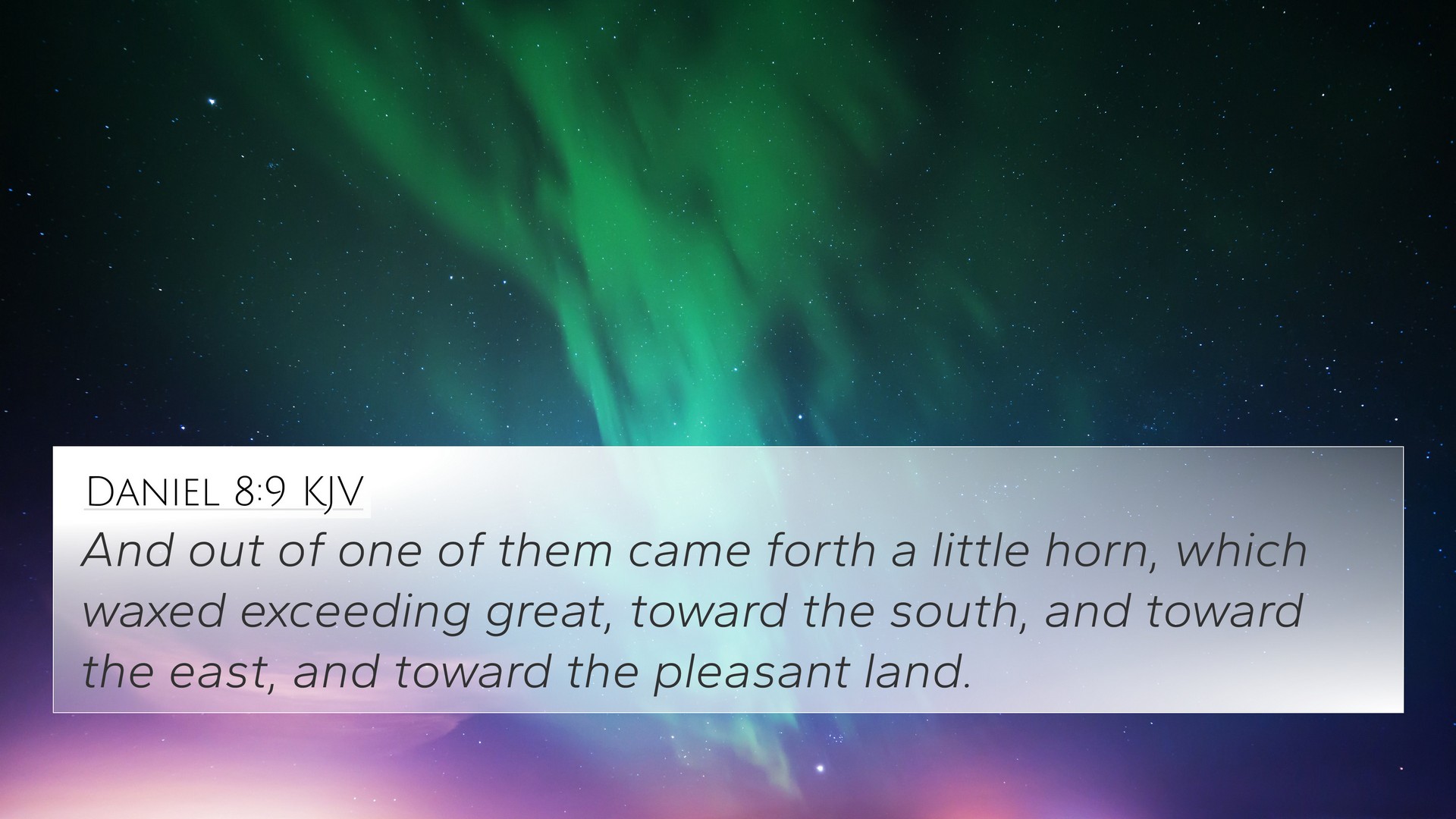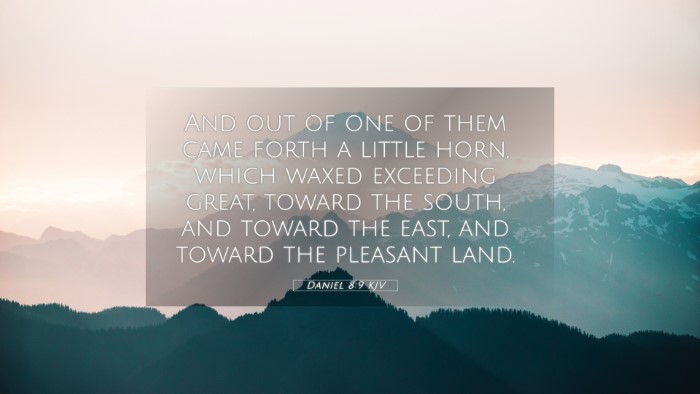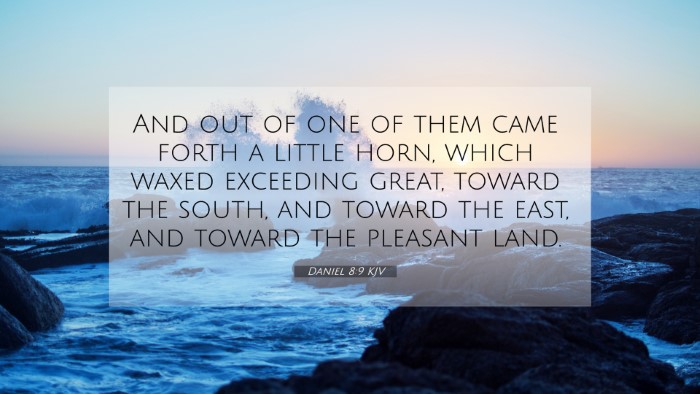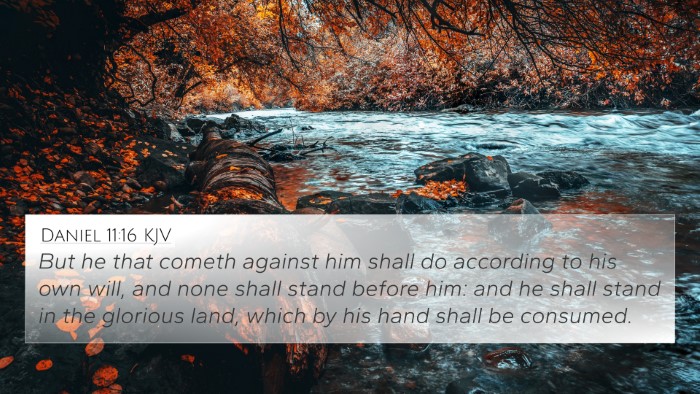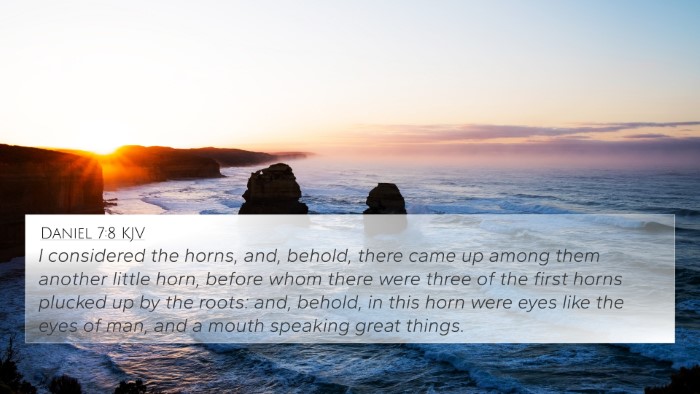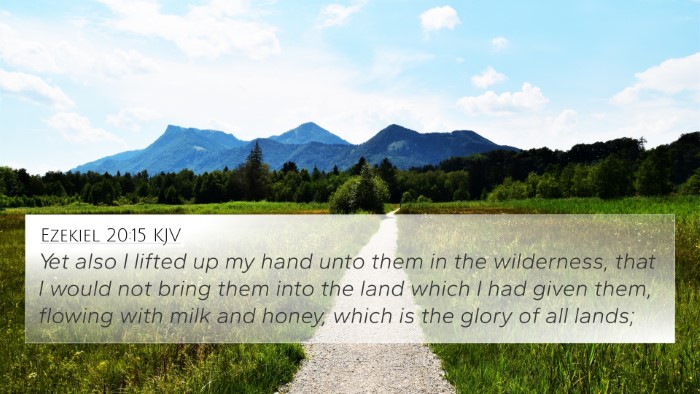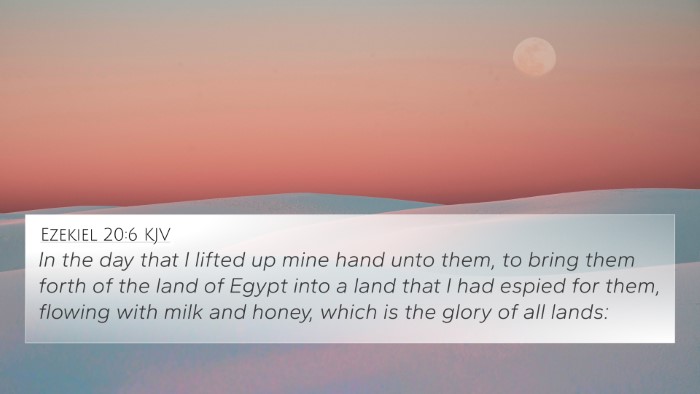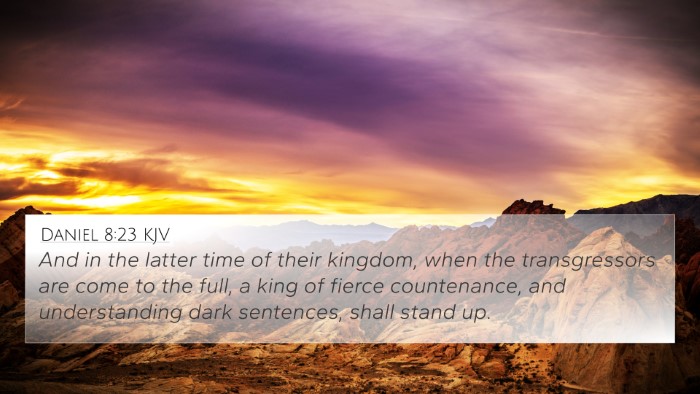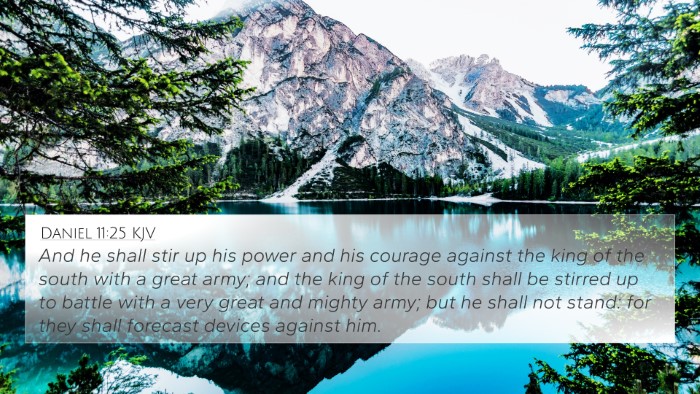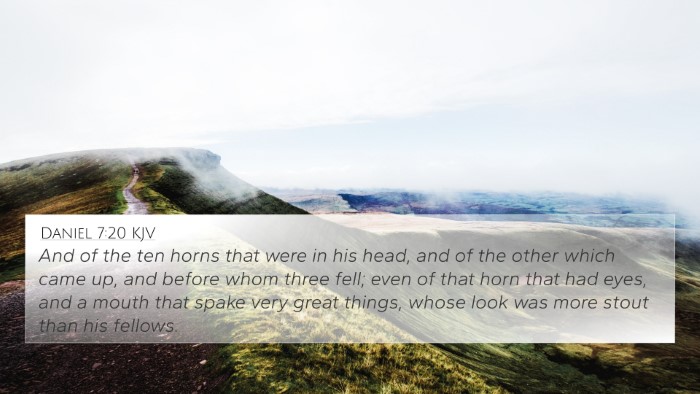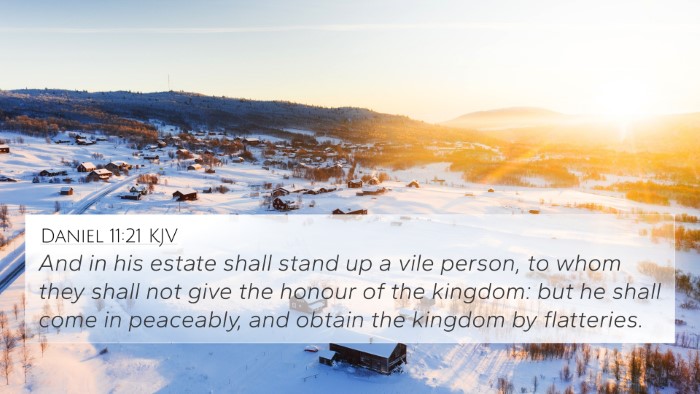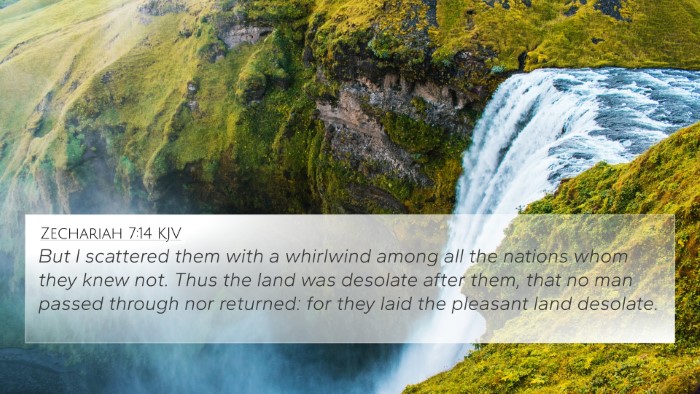Understanding Daniel 8:9
Daniel 8:9 states: "And out of one of them came a little horn, which waxed exceeding great, toward the south, and toward the east, and toward the pleasant land."
This verse is pivotal in understanding the visions Daniel received regarding future kingdoms and empires. It specifically refers to the rise of a notable power, often interpreted as a symbolic representation of the Seleucid Empire and its rulers.
Summary and Interpretation
In examining this verse, scholars like Matthew Henry, Albert Barnes, and Adam Clarke provide insights that explore the significance of the "little horn" and its implications for Israel and prophetic literature.
- Matthew Henry: He emphasizes the "little horn" as indicating a smaller power that grows significantly in influence, highlighting its impact on the people of God. The direction (south, east, and the "pleasant land") signifies territorial expansion and the opposition the horn would bring against the faithful.
- Albert Barnes: Barnes points out the historical context of the verse, indicating that the little horn represents Antiochus Epiphanes, whose actions significantly affected the Jewish people and their worship. He emphasizes the moral and spiritual ramifications of the "greatness" of this power.
- Adam Clarke: Clark offers a more theological view, suggesting that the rise of this little horn symbolizes the persistent nature of opposition against God's people through history. He connects this to a broader theme of struggle between good and evil as seen in biblical narratives.
Bible Verse Cross-References
To fully comprehend Daniel 8:9, one can utilize a Bible cross-reference guide to link it with several key passages that provide deeper understanding:
- Daniel 7:8: Details the vision of the four beasts, with a particular focus on the emergence of the little horn.
- Daniel 11:21-32: Discusses the actions of Antiochus Epiphanes, directly correlating with the little horn's characteristics of deceit and aggression.
- Revelation 13:1-5: Discusses a beast rising from the sea, echoing themes of tyranny and persecution faced by believers.
- Matthew 24:15: References the "abomination of desolation," which relates to the actions of the little horn in desecrating the temple.
- Zechariah 11:17: Talks about a worthless shepherd, paralleling the deceptive qualities of the little horn.
- 1 Maccabees 1:54-59: Describes the oppressive actions during the reign of Antiochus, revealing historical connections with the text.
- 2 Thessalonians 2:3-4: References the man of sin who opposes and exalts himself against all that is called God, linking to the overarching theme of opposition in the end times.
Thematic Connections
This verse can also be understood through the lens of thematic Bible verse connections, illustrating how God communicates through similar narratives across both the Old and New Testaments. The little horn's actions represent types and shadows of broader spiritual truths, such as:
- Oppression of Believers: Illustrated by numerous biblical figures facing adversities promoted by earthly powers.
- The Faithfulness of God: Throughout the biblical narrative, God's people continually find hope and assurance, even amid trials.
- Prophetic Fulfillment: The consistent theme of prophecy comes alive through the historical fulfillment seen in these verses.
Tools for Bible Cross-Referencing
Utilizing a comprehensive Bible concordance or tools for Bible cross-referencing can greatly enhance your study of these scriptures. Understanding cross-referencing Bible study methods can illuminate the connections between various books and their messages.
Conclusion
Daniel 8:9 serves as a crucial part of biblical prophecy, shedding light on the workings of evil powers through history and their ultimate defeat by God's sovereign plan. As we explore this verse, we gain insights not only into the past but also into continued relevances for modern believers.
For anyone looking to deepen their understanding of Daniel 8:9, keep in mind the relevance of cross-references for sermon preparation, as this verse connects to a wider narrative of God's faithfulness amidst trials.
